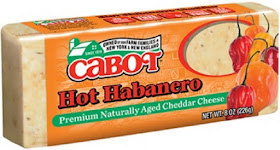Diario dell’Esperienza Italoamericana
A Journal of the Italian-American Experience
domenica 24 febbraio 2013
Semolina Polenta!
Every so often, a culinary idea hypnotizes me and takes me to a place of utter distraction — a 19th-century place.
It happened to me a month ago, when the excellent foodblogger from Catania, Peppe Sidoti (cibidicasa.com), told me about "the spontaneous plants that our grandparents picked in the field and that were as important part of their daily diet as the plants in their garden. ... In general the various greens were all stewed together in a soup called ’a minestra servaggia ('wild soup'), ... [which] was my mother's dinner almost every night."
For several days, my poor wife listened to nothing other than dreams about wild greens!
Today I went into another trance.
A few months ago, I had read that one could make polenta with flours other than cornmeal. Rice flour, buckwheat flour, or ... semolina.
Today was the day. The house was quiet. And I made my first semolina polenta.
I made it in the normal way, with water, salt, and a tablespoon of butter in the water. (Instead of butter, my ancestors used ’a sugna, i.e. pork lard.)
I made only a small quantity of polenta, which when finished I transferred to a Pyrex dish. (There is no need to grease the dish, because of the butter inside the polenta.)
You let it cool, then what do you do with it? Raw slices? Grilled slices? Slices fried in oil? Scagliuozzoli (little fried pieces)?
I decided to make it all different ways! I was so excited that I didn't have the patience to let it cool in the fridge. Thus the "interesting" shapes:
I would have liked to try two other ways: baked in the oven, and fried in lard. However when all was said and done, I think I liked the raw polenta best. The union of the two flavors, semolina and butter, brought back to me a huge nostalgia. When I was but a picciutteddu my Sicilian grandmother made me pastina. She used either acini di pepe or broken vermicelli (i.e., capellini. In Italy, vermicelli are thicker than spaghetti, similar to spaghettoni. What Americans call “vermicelli” is a thin pasta, thinner than spaghettini but thicker than angel hair). Pasta, egg, milk, and butter. THAT'S IT. NOTHING else. Not even a grain of black pepper or salt (other than what was in the water and in the butter). (I learned only many years later (2016) that my other grandmother, Maria Ciampa, made the very same recipe for my cousins, only the pastina she used was orzo.)
You can see how much I enjoyed the raw polenta:
Now, how should I adorn this polenta? Neapolitan style, with tomato sauce? Avellinese style, with savory cabbage? No, Spanish-American style! Lo and behold! Vermont cheddar with very hot habañeros inside, made by a world-class cheese maker, Cabot. The fiery pepper, with the innocent taste of the polenta — a celestial pairing!






Nessun commento:
Posta un commento